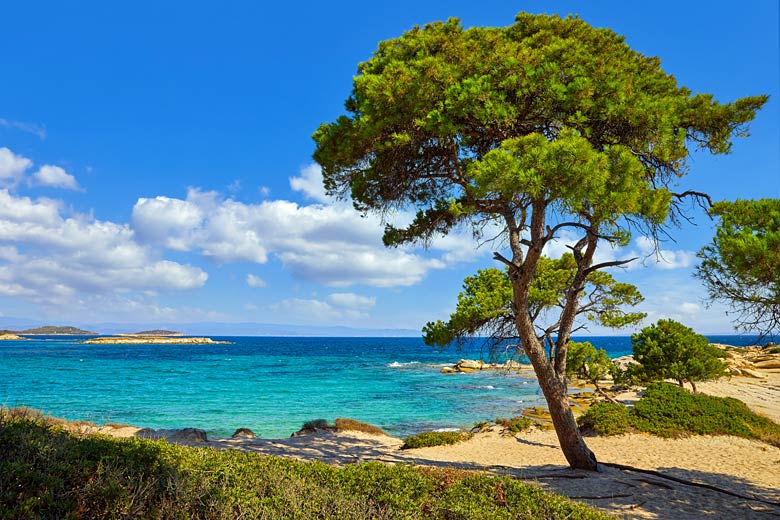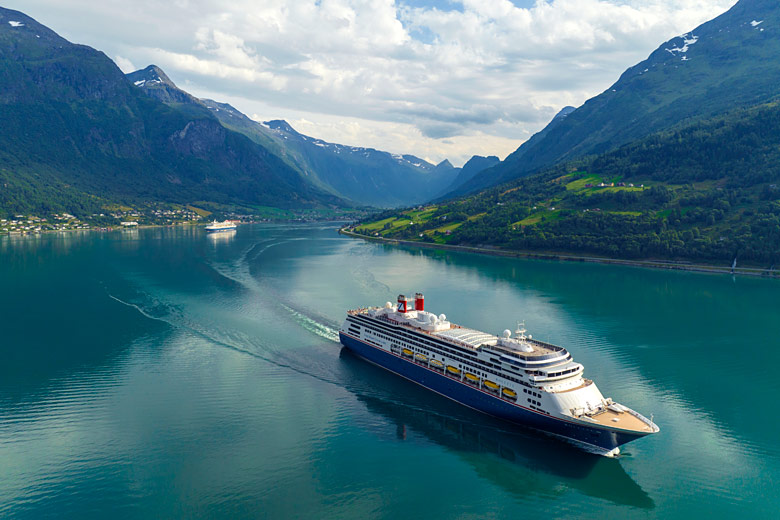Maximum daytime temperature
The maximum temperature figure is often the first thing we're drawn to when examining the weather forecast, especially in the UK where we're eternally hopeful that it will rise that little bit higher.
Here, we examine firstly exactly what the maximum temperature is, before considering what affects it, and the hottest places on earth, all to help you find a destination with the perfect maximum temperature for your next holiday.
- Maximum temperatures by destination
- How we measure temperatures
- More about maximum temperatures
- What affects the temperature?
- The hottest places on earth
- Maximum temperature by month
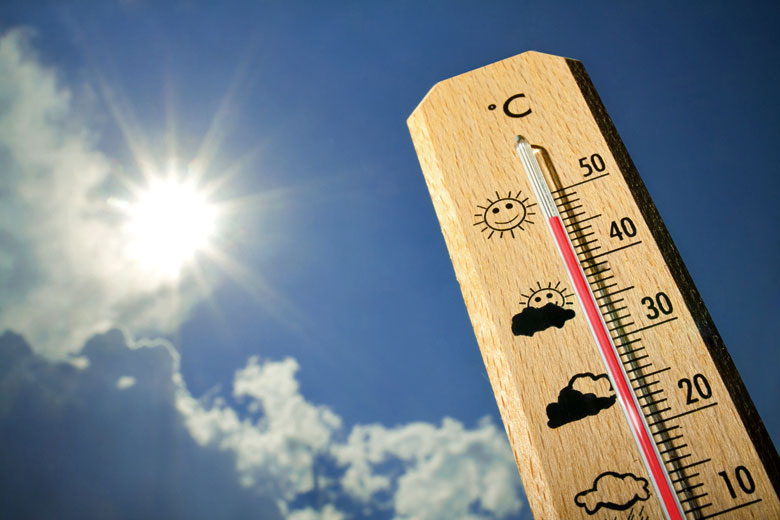
How we measure daytime temperatures
Whether you like it warm, hot, or roasting, most people seek out destinations with mid to high temperatures for their holiday.
How hot depends on you, so when it comes to planning and researching your destination, you'll no doubt be looking closely for the maximum daytime temperature as an indication of what the weather is like in any given month.
Our weather guides display the maximum daytime temperature, which is the maximum level that the air temperature typically rises to during the day.
This figure is calculated using daily temperature readings for over 30 years to find the average maximum daytime temperature for every month of the year.
More about maximum temperatures
As with any average, daytime temperatures can vary day-to-day, even slightly year-to-year, but the maximum daytime temperature figure shown across not only our guides but any weather forecast you are likely to see, gives you a good indication of what the temperature will be at that time at your destination.
One of the most important things about measuring the temperature is to ensure that the reading is taken in the shade, as it is the air temperature that is needed.
If you hold your mercury in direct sunlight, you are simply measuring how much of the infrared radiation emitted by the sun is being absorbed by the thermometer.
The moment the sun goes behind a cloud the temperature will drop. This is not actually very useful, while the temperature of the air is useful not only because it is more uniform but because it allows meteorologists to analyse other properties of the air such the amount of water vapour present, and the air pressure.
Did you know? The sun does not warm the air directly: the sun's radiation is absorbed by the land, which then warms the air.
What affects the maximum temperature?
The temperature of the air is determined primarily by the strength of the sun, and this in turn depends on where you are in the world.
Near the equator or, more precisely, where the sun is directly overhead, the earth receives a much larger dose of solar radiation on a daily basis than areas nearer the poles as the following diagram shows.
The determining factors are the amount of atmosphere the sun's radiation has to travel through, and the size of the area over which the radiation is spread.
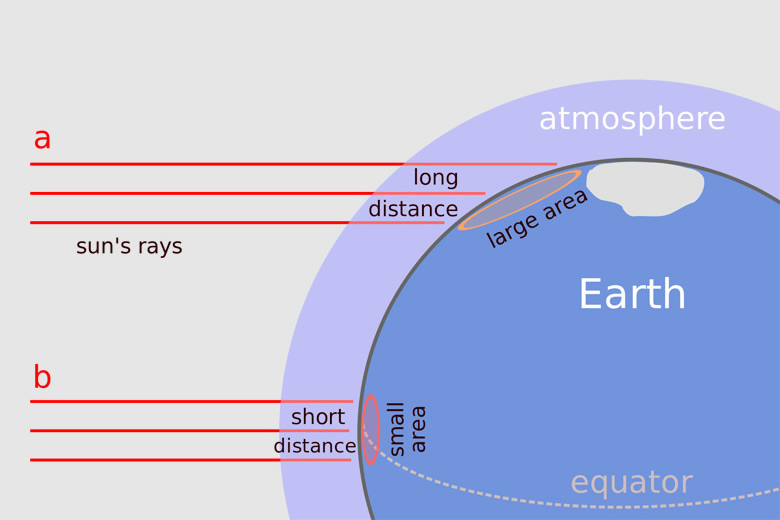
At the equator, when the sun is overhead, there is only a relatively short distance for the radiation to travel through the atmosphere, and it is also concentrated into a relatively small area.
Typically these regions have some of the highest daytime temperatures but other factors also play their part. The most important of these is how much water vapour there is in the air.
Humidity
The drier the air, the hotter it can be by day and the colder it can be by night - typical desert climate conditions.
However, if the air is very humid this will limit how high the temperature can rise during the day, and the extent to which the temperature falls overnight - typical hot and humid tropical climate conditions where it generally remains hot overnight.
Did you know? The highest temperature ever recorded in the UK was 40.3°C (104.5°F) in Lincolnshire in July 2022. This is nearly 3°C higher than the highest temperature ever recorded in Singapore, as levels of humidity in the nation state are generally pretty high.
In many tropical regions, when humidity levels are very high, the maximum daytime temperature is limited to between 32°C and 34°C.
As the air temperature reaches these levels, the energy from the sun is then almost entirely devoted to evaporating moisture from vegetation and the soil, so the temperature stops rising.
However, when the air is relatively dry, think tropical dry season or out in the desert, it is quite common for temperatures to rise above 35°C and even into the forties.
Read more: Heat & humidity calculator
Movements of air masses
Another factor that can affect maximum daytime temperature is the movement of high pressure air masses from one region to another.
An air mass can be thought of as a large area of low or high pressure - and it is the high pressure air masses that have the greatest effect with respect to maximum daytime temperature.
In the summer, warm high pressure tropical air masses from North Africa sometimes reach the UK, bringing the highest maximum daytime temperatures we ever experience.
The shift in the air mass exposes us to conditions more like those of North Africa for the time that the high pressure remains over the UK.
While in winter high pressure polar air masses can bring some of our coldest temperatures exposing us to our lowest minimum temperatures. High pressure air masses have a greater effect than low pressure systems because the air they bring is always dry.
Surface winds
On a much smaller scale than air mass movements, surface winds can also affect maximum daytime temperatures. Differences in surface temperature is one instance that can lead to a surface wind blowing up.
If you are by the sea, typically on a hot day the land will warm up much more than the sea, causing air pressure to drop over land as the warm air rises, and for cooler air to be drawn in over the sea, creating the classic sea breeze scenario.
It is always differences in air pressure between two regions that starts a surface wind blowing, and the wind always blows from high pressure towards low. Sea breezes have a small but welcome effect on maximum daytime temperature.
In other cases, the effect may not be so welcome, resulting in higher maximum temperatures or bringing lower temperatures when they are not so welcome.
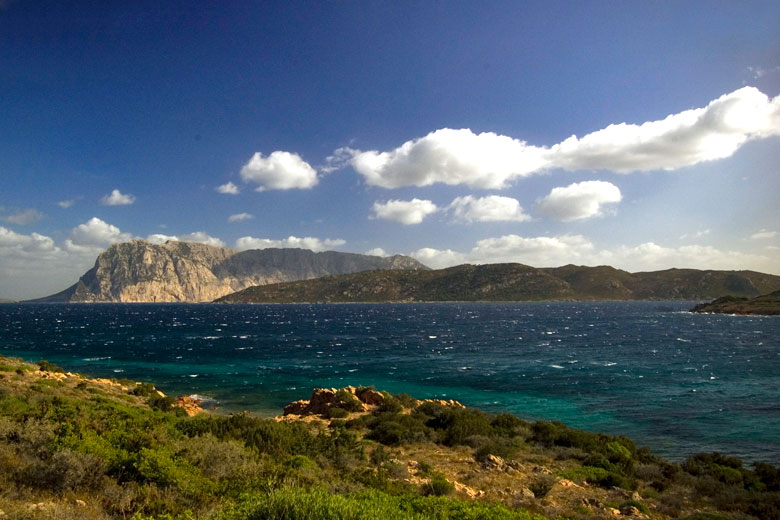
Many travellers to the south of France will have heard talk of the 'mistral'. It is a cold north-westerly wind that arises when pressure is high over the Bay of Biscay and low over the Mediterranean to the north of Corsica.
The pressure differences result in a strong wind (up to 50mph) that forces its way down the Rhone Valley and out into the Med, contained between the Alps to the east and the Pyrenees to the west.
It can blow at any time of year but is most common, and coldest, at the end of winter and the beginning of spring.
Though it is usually mostly very clear and sunny when the mistral is blowing, maximum temperatures can take a tumble for a day or two, sometimes for as long as a week.
By a similar process, when pressure is high over the Sahara and low over the western Mediterranean, maximum daytime temperatures in the central and eastern Med can be affected by a warm to hot surface wind blowing off North Africa towards Europe, known as the 'sirocco'.
It starts off as a very dry and dusty hot wind but once over the sea becomes more and more humid. It is the countries of southern Europe such as Malta, Italy, Greece and, to a lesser extent, Turkey that are most affected by sirocco winds.
Usually, they only last for a few days generally in spring and bring much higher than normal maximum daytime temperatures.
Probably the most famous hot wind is a 'Santa Ana' wind which affects southern California in the autumn. Arising out of high pressure over the Great Basin area of Nevada and flowing towards the coast, Santa Ana winds can raise maximum daytime temperatures by as much as 15°C above normal levels in a matter of hours by the time they reach the coast.
The increase in temperature is due simply to the increase in pressure as it falls over 1,000 metres from the high plateau to the coast. Santa Ana winds are also particularly dangerous because they are dry winds that occur at the end of the dry season, and are often in the news fanning the flames of wildfires in southern California.
The hottest places on earth
Unsurprisingly, because of their dry conditions and their sub-tropical location, the places with the highest maximum temperatures are generally found in the Sahara and Arabian Deserts, so towns and cities that border these vast wildernesses tend to record the highest daytime temperatures worldwide in countries such as Algeria, Saudi Arabia, Iran, Iraq and Sudan.
Did you know? Officially, the highest temperature ever recorded was 56.7°C in July 1913 in Death Valley California, USA.
Top 10 holiday destinations with high maximum temperatures
If you like it hot and eagerly seek out destinations with high maximum temperatures, there are plenty of popular places to go around the world that see temperatures surpassing 35°C at certain times of year. Our pick of the top 10 regions with seriously high temperatures, includes:
1. Death Valley, California, USA
The clue is in the name with this famous arid, low lying, desert landscape in eastern California, where maximum daytime temperatures peak in August at 46°C. It can be even hotter in Death Valley, as this figure is, of course, an average but you get the idea.
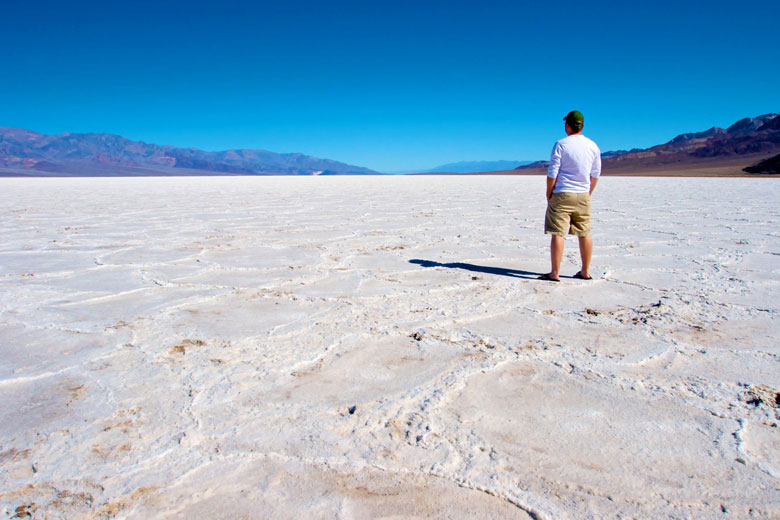
2. Phoenix, Arizona, USA
July is the hottest month for Phoenix when the maximum daytime temperature reaches 41°C. Interestingly, some of the state's major attractions, such as Monument Valley, the Grand Canyon, and Flagstaff, can be at least 10°C cooler at the same time, which is down to their elevation.
3. Northern India
Cities such as Jaipur, Agra, and Lucknow see their hottest time in May, when the highest daytime temperature can reach 40°C to 41°C before the monsoon season hits. New Delhi isn't far behind at 39° C.
4. Aswan & Luxor, Egypt
These ancient attractions in Upper Egypt are nice and hot in summer when the average daytime temperature in Aswan and Luxor climbs to a sweltering 40°C to 41°C. Given their locations on the fringes of the Western Desert, these places are exceedingly hot and dry from June to August.
5. Abu Dhabi & Dubai, UAE
The maximum temperature in the UAE is never that low but the summer months are incredibly hot, hitting at least 41°C in July and August in the holiday hotspots of Abu Dhabi and Dubai.
If you venture inland, away from the coast, it can easily creep a few degrees higher, although nighttimes can take a sudden dip after sunset in the desert.
6. Las Vegas, Nevada, USA
This throbbing desert city really heats, as temperatures in Las Vegas in July usually hit, if not surpass, 41°C daily. By August it may have dropped a degree or two to 39°C but it is still one hell of a hot place at the height of summer.
7. Ouarzazate & Marrakech, Morocco
Another nation bordering a great desert is Morocco, which also encounters some serious heat in summer. The scenic mud brick fort town of Ouarzazate, which sits right on the edge of the Sahara, picks up highs of 38°C in July, while the thriving tourist hub of Marrakech tends to see 36°C at the same time.

8. Fort Worth, Texas, USA
This wild west frontier town may no longer have to worry about marauding cowboys but Fort Worth certainly has to contend with high daytime temperatures, especially in July when the mercury easily hits 36°C.
9. Cordoba, Spain
Europe typically escapes soaring temperatures thanks to its distance from any great desert environment. You can still find toasty hot daytime temperatures however, especially in the beautiful and historic Spanish city of Cordoba, where daily highs can reach 36°C, no problem. Seville, some 140 km to the southwest, enjoys similar daily highs, peaking at 35°C in August.
10. Nicosia, Cyprus
A holiday favourite, Cyprus enjoys some of the finest weather in the Mediterranean thanks to its easterly position. Summer is by far the hottest time of year, naturally, with August the hottest month in inland Nicosia thanks to maximum temperature of around 35°C.
The maximum temperature is merely one aspect of the weather, so if you're keen to find out more head over to our detailed weather series for all the info you will ever need on everything from tropical storms to avoiding UV damage.
Don't forget to check out our complete collection of online travel deals and discounts as well, to get you on your way for less.
More holiday weather parameters:
- Daylight hours
- Days with some rainfall
- Heat and humidity levels
- Minimum night-time temperature
- Monthly rainfall
- Sea temperature
- Sunshine hours
- UV index (maximum)
Maximum daytime temperature by month
Below is the maximum daytime temperature levels for popular holiday destinations around the world by month. Select a month to see top destinations or search by name to see all months.
Maximum daytime temperature in January
- Goa
- Kenyan Coast
- Phuket, Thailand
- Kerala
- Bali
- Maldives
- Jamaica
- Barbados
- Chiang Mai, Thailand
- Dominican Republic
- Cape Town
- Dubai
- Gran Canaria
- Lanzarote
- Sharm el Sheikh
- Fuerteventura
- Tenerife
- Cyprus
- Benidorm
- Ibiza
- Malta
- Costa del Sol
- Majorca
Maximum daytime temperature in February
- Phuket, Thailand
- Chiang Mai, Thailand
- Goa
- Kenyan Coast
- Kerala
- Maldives
- Sri Lanka
- Bali
- Barbados
- Jamaica
- Dominican Republic
- Cape Town
- Dubai
- Luxor, Egypt
- Sharm el Sheikh
- Fuerteventura
- Gran Canaria
- Lanzarote
- Tenerife
- Benidorm
- Costa del Sol
- Cyprus
- Ibiza
- Malta
- Majorca
Maximum daytime temperature in March
- Kenyan Coast
- Sri Lanka
- Bali
- Maldives
- Barbados
- Cancun
- Jamaica
- Dominican Republic
- Luxor, Egypt
- Dubai
- Miami
- Orlando
- Sharm el Sheikh
- Morocco
- Fuerteventura
- Gran Canaria
- Lanzarote
- Tenerife
- Algarve
- Benidorm
- Costa del Sol
- Cyprus
- Ibiza
- Majorca
- Malta
Maximum daytime temperature in April
- Dubai
- Cancun
- Bali
- Barbados
- Dominican Republic
- Jamaica
- Seychelles
- Mauritius
- Orlando
- Sharm el Sheikh
- Miami
- Morocco
- California
- Lanzarote
- Cyprus
- Gran Canaria
- Tenerife
- Algarve
- Benidorm
- Costa del Sol
- Malta
- Ibiza
- Majorca
Maximum daytime temperature in May
- Dubai
- Cancun
- Sharm el Sheikh
- Orlando
- Bali
- Miami
- Mauritius
- Morocco
- Antalya
- Bodrum
- Marmaris
- Tunisia
- Cyprus
- Rhodes
- Costa del Sol
- Crete
- Lanzarote
- Malta
- Rome
- Algarve
- Benidorm
- Ibiza
- Santorini
- Majorca
- Tenerife
Maximum daytime temperature in June
- Dubai
- Sharm el Sheikh
- Orlando
- Antalya
- Bali
- Bodrum
- Marmaris
- Rhodes
- Tunisia
- Corfu
- Cyprus
- Costa del Sol
- Crete
- Malta
- Rome
- Benidorm
- Ibiza
- Naples
- Santorini
- Algarve
- Lanzarote
- Majorca
- Barcelona
- Fuerteventura
- Gran Canaria
- Tenerife
- Nice
Maximum daytime temperature in July
- Dubai
- Egypt's Red Sea
- Antalya
- Orlando
- Tunisia
- Corfu
- Montenegro
- Rhodes
- Albania
- Calabria
- Costa del Sol
- Cyprus
- Florence
- Maldives
- Malta
- Tuscany
- Bali
- Benidorm
- California
- Campania
- Costa Almeria
- Costa Blanca
- Costa Dorada
- Hawaii
- Ibiza
- Majorca
- Milan
- Naples
- Puglia
- Sardinia
- Boston
- Bulgaria
- Costa Brava
- Crete
- Croatia
- Dubrovnik
- Menorca
- Provence
- Santorini
- Sicily
- Venetian Riviera
- Zanzibar
- Algarve
- Barcelona
- Corsica
- Hungary
- Italian Lakes
- Lanzarote
- Mykonos
- North Macedonia
- Sunny Beach
- Toronto
- Austria
- Dordogne
- Gran Canaria
- Italian Riviera
- Slovenia
- South of France
- Vienna
- Loire Valley
- Tenerife
- Bosnia and Herzegovina
- Paris
- Poland
- Alberta
- Azores, Portugal
- Belgium
- Krakow
- British Columbia
- Lithuania
- London
- Madeira
- Normandy
- Sweden
- Switzerland
- Amsterdam
- Cotswolds
- Denmark
- Dolomites
- Dorset
- Estonia
- Finland
- Italian Alps
- Latvia
- Netherlands
- Norway
- Somerset
- Suffolk
- Brittany
- Channel Islands
- Devon
- Wales
- Blackpool
- Cornwall
- Ireland
- Peak District
- Northern Ireland
- Northumberland
- Pyrenees
- Scotland
- Western Australia
- Lake District
- Yorkshire Dales
- Iceland
- Faroe Islands
- French Alps
Maximum daytime temperature in August
- Dubai
- Orlando
- Tunisia
- Corfu
- Montenegro
- Rhodes
- Albania
- Benidorm
- California
- Costa Almeria
- Costa del Sol
- Cyprus
- Los Angeles
- Malta
- Bali
- Costa de la Luz
- Ibiza
- Majorca
- Naples
- Sardinia
- Tuscany
- Zanzibar
- Algarve
- Bulgaria
- Costa Dorada
- Crete
- Croatia
- Lanzarote
- Menorca
- New York
- North Macedonia
- Budapest
- Corsica
- Gran Canaria
- Hungary
- Santorini
- Nice
- Tenerife
- Austria
- Slovenia
- Bosnia and Herzegovina
- Sarajevo
- Belgium
- Germany
- Northern France
- Poland
- Alberta
- Lithuania
- Vancouver
- Amsterdam
- Cambridge
- Denmark
- Dorset
- Isle of Wight
- Italian Alps
- Kent
- Latvia
- Netherlands
- Norfolk
- Somerset
- Suffolk
- Switzerland
- Channel Islands
- Devon
- East Sussex
- Cornwall
- Ireland
- Pembrokeshire
- Edinburgh
- Northern Ireland
- Northumberland
- Peak District
- Scotland
- Lake District
- Pyrenees
- Yorkshire Dales
- Faroe Islands
- Iceland
Maximum daytime temperature in September
- Dubai
- Morocco
- Orlando
- Antalya
- Bali
- Marmaris
- Tunisia
- Bodrum
- Cyprus
- Benidorm
- Lanzarote
- Malta
- Rhodes
- Albania
- Corfu
- Costa del Sol
- Ibiza
- Lisbon
- Madrid
- Montenegro
- Rome
- Algarve
- Gran Canaria
- Majorca
- Naples
- Tuscany
- Crete
- Tenerife
- North Macedonia
- Johannesburg
- Nice
- San Francisco
- Austria
- Slovenia
- Belgium
- Bosnia and Herzegovina
- Northern France
- Cambridge
- Channel Islands
- Germany
- Devon
- Dorset
- East Sussex
- Isle of Wight
- Italian Alps
- Kent
- Netherlands
- Norfolk
- Poland
- Somerset
- Suffolk
- Switzerland
- Cornwall
- Denmark
- Ireland
- Pembrokeshire
- Edinburgh
- Latvia
- Lithuania
- Northern Ireland
- Northumberland
- Peak District
- Scotland
- Pyrenees
- Lake District
- Yorkshire Dales
- Faroe Islands
- Iceland
Maximum daytime temperature in October
- Dubai
- Luxor
- Oman
- Gambia
- Goa
- Thailand
- Bali
- Dominican Republic
- Jamaica
- Zanzibar
- Barbados
- Caribbean Coast, Mexico
- Kerala
- Maldives
- Sri Lanka
- Cape Verde
- Florida
- Hawaii
- Kenyan Coast
- Seychelles
- Sharm el Sheikh
- Mauritius
- Morocco
- Antalya
- California
- Tunisia
- Cyprus
- Gran Canaria
- Lanzarote
- Marmaris
- Bodrum
- Kos
- Malta
- Rhodes
- Tenerife
- Benidorm
- Calabria
- Costa Blanca
- Ibiza
- Costa del Sol
- Crete
- Majorca
- Western Australia
- Albania
- Madeira
- Montenegro
- Mykonos
- Dordogne
- Provence
- South of France
- Italian Riviera
- Sunny Beach
- Italian Lakes
- Loire Valley
- North Macedonia
- Brittany
- Channel Islands
- Hungary
- Normandy
- Northern France
- Slovenia
- Austria
- Belgium
- Bosnia and Herzegovina
- Cambridge
- Cornwall
- Devon
- Dorset
- East Sussex
- Isle of Wight
- Kent
- Norfolk
- Somerset
- Suffolk
- British Columbia
- Ireland
- Netherlands
- Pembrokeshire
- Denmark
- Dolomites
- Edinburgh
- Germany
- Italian Alps
- Northern Ireland
- Northumberland
- Poland
- Scotland
- Switzerland
- Alberta
- Lake District
- Peak District
- Latvia
- Lithuania
- Yorkshire Dales
- Faroe Islands
- Pyrenees
- Iceland
Maximum daytime temperature in November
- Gambia
- Goa
- Thailand
- Bali
- Dubai
- Kenyan Coast
- Kerala
- Zanzibar
- Dominican Republic
- Jamaica
- Maldives
- Oman
- Sri Lanka
- Barbados
- Caribbean Coast, Mexico
- Mauritius
- Seychelles
- Cape Verde
- Cuba
- Hawaii
- Luxor
- Luxor, Egypt
- Florida
- Marsa Alam
- Miami
- Egypt's Red Sea
- Sharm el Sheikh
- Western Australia
- Fuerteventura
- Gran Canaria
- Lanzarote
- California
- Morocco
- Cyprus
- Tenerife
- Tunisia
- Antalya
- Malta
- Rhodes
- Benidorm
- Calabria
- Costa Blanca
- Ibiza
- Kos
- Costa del Sol
- Madeira
- Majorca
- Menorca
- Corsica
- Mykonos
- Albania
- Montenegro
- Provence
- South of France
- Dordogne
- Italian Riviera
- Sunny Beach
- Brittany
- Channel Islands
- Jersey
- Cornwall
- Devon
- Dorset
- East Sussex
- Isle of Wight
- Loire Valley
- Normandy
- Pembrokeshire
- Cambridge
- Ireland
- Italian Lakes
- Kent
- Norfolk
- North Macedonia
- Northern France
- Somerset
- Suffolk
- Belgium
- British Columbia
- Netherlands
- Northern Ireland
- Northumberland
- Austria
- Bosnia and Herzegovina
- Denmark
- Edinburgh
- Hungary
- Peak District
- Scotland
- Slovenia
- Germany
- Lake District
- Switzerland
- Dolomites
- Faroe Islands
- Italian Alps
- Poland
- Yorkshire Dales
- Latvia
- Lithuania
- Pyrenees
- Alberta
- Iceland
Maximum daytime temperature in December
- Goa
- Aruba
- Botswana
- Gambia
- Bali
- Kenyan Coast
- Kerala
- Kuala Lumpur
- Mumbai
- Namibia
- Thailand
- Zanzibar
- Cambodia
- Maldives
- Philippines
- Sri Lanka
- Antigua
- Barbados
- Brisbane
- Curacao
- Dominican Republic
- Fiji
- Grenada
- Jamaica
- Mauritius
- Puerto Vallarta
- Seychelles
- Singapore
- St Kitts & Nevis
- St Lucia
- Tobago
- Argentina
- British Virgin Islands
- Cancun & Riviera Maya
- Perth
- Rio de Janeiro
- Senegal
- Cuba
- Turks & Caicos
- Zambia
- Abu Dhabi
- Adelaide
- Bahamas
- Cape Verde
- Dubai
- Galapagos
- Hawaii
- Johannesburg
- Machu Picchu
- Oman
- Sydney
- Tahiti
- Chile
- Marsa Alam
- Agra
- Cape Town
- Florida
- Jaipur
- Luxor
- Melbourne
- Miami
- Bermuda
- Costa Rica
- New Delhi
- Orlando
- Red Sea, Egypt
- Vietnam
- Cairo
- Gran Canaria
- Lanzarote
- Agadir
- Fuerteventura
- Hong Kong
- Los Angeles
- Marrakech
- Nepal
- New Zealand
- Tenerife
- New Orleans
- Tunisia
- Azores
- Cyprus
- La Palma
- Malta
- Texas
- Algarve
- Antalya Coast
- Benidorm
- Calabria
- Costa Blanca
- Costa de la Luz
- Gibraltar
- Ibiza
- Kos
- Madeira
- Rhodes
- Santorini
- Seville
- Valencia
- Zante
- Bodrum & Izmir
- Costa Almeria
- Costa del Sol
- Crete
- Dalaman & Marmaris
- Kefalonia
- Lisbon
- Majorca
- Menorca
- Sardinia
- Athens
- Barcelona
- Corfu
- Costa Dorada
- Las Vegas
- Mykonos
- Peloponnese
- Porto
- San Francisco
- Sicily
- Campania
- Corsica
- Costa Brava
- Jordan
- Naples
- Puglia
- Rome
- Albania
- Bilbao
- Japan
- Nice
- San Sebastian
- Santiago de Compostela
- Skiathos
- Sorrento
- South of France
- Granada
- Halkidiki
- Istanbul
- Marseille
- Provence
- Brittany
- Cornwall
- Croatia
- Florence
- Guernsey
- Italian Riviera
- Madrid
- Montenegro
- Shanghai
- Thessaloniki
- Tuscany
- Devon
- Dordogne
- Dorset
- Ireland
- Isle of Wight
- Jersey
- Pembrokeshire
- Bath
- Bristol
- Bulgaria
- D.C.
- Kent
- London
- Normandy
- Northern Ireland
- Wales
- Blackpool
- Cambridge
- Cotswolds
- Loire Valley
- Norfolk
- Northumberland
- Paris
- Somerset
- Suffolk
- Sunny Beach
- Venice
- Amsterdam
- Belgium
- British Columbia
- Edinburgh
- Inverness
- Lille
- Milan
- Netherlands
- New York City
- Peak District
- Scotland
- St Andrews
- Vancouver
- Verona
- Cologne
- Faroe Islands
- Fort William
- Italian Lakes
- Lake District
- North Macedonia
- Boston
- Bucharest
- Copenhagen
- Denmark
- Hamburg
- Luxembourg
- Seoul
- Yorkshire Dales
- Austria
- Beijing
- Berlin
- Hungary
- Prague
- Slovenia
- Switzerland
- Bosnia & Herzegovina
- Chicago
- Dolomites
- Italian Alps
- Krakow
- Andorra
- Iceland
- Poland
- Pyrenees
- Sweden
- Latvia
- Norway
- Toronto
- Estonia
- Finland
- Lithuania
- Alberta
- Calgary
- Montreal
- French Alps
Be inspired
Get your weekly fix of holiday inspiration from some of the world's best travel writers plus save on your next trip with the latest exclusive offers
We promise not to share your details
Related posts
Popular travel offers
Explore holiday destinations
- Beach holidays
- City breaks
- Family holidays
- Half term holidays
- Spring holidays
- Summer holidays
- Autumn holidays
- Winter sun holidays
- Honeymoons
- Coolcations
- Compare places
- Ski resorts
Save with latest deals & discounts
- Holiday offers
- Top travel brands
- Airlines & flights
- Discount hotels
- TUI
- Jet2holidays
- Neilson
- Marella Cruises
- Pierre & Vacances
- Caledonian Travel
- Club Med
- Black Friday sales
Airport parking
- Manchester Airport
- Stansted Airport
- Bristol Airport
- Luton Airport
- Birmingham Airport
- Edinburgh Airport
- Gatwick Airport
- Glasgow Airport
- Newcastle Airport
Airport lounges
- Manchester Airport
- Birmingham Airport
- Bristol Airport
- Edinburgh Airport
- Glasgow Airport
- Heathrow Airport
- Newcastle Airport
- Stansted Airport
- Gatwick Airport














